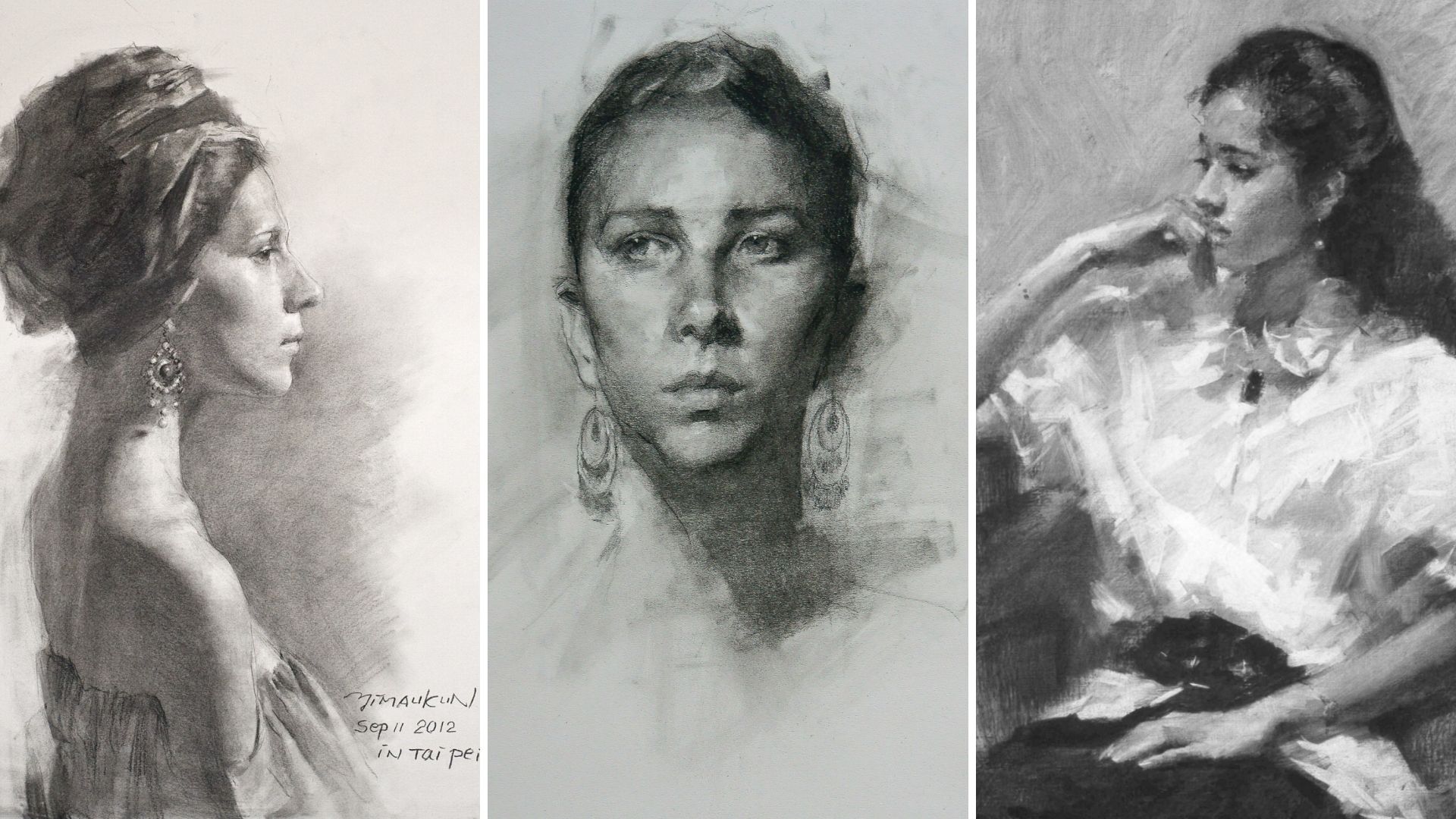答網友問 – 素描中的虛與實
Dear Mr. Yim, I love drawing and have watched your drawing video lessons many times. I’m mesmerized by the firm and soft edges and texture in your drawing and would like to emulate, but it’s hard for me to put the theory of firm and soft edges into practice. What is your advice for mastering firm and soft edges in drawing?
冉茂芹老师,您好,我是名素描爱好者,在网上观看您的素描的视频已经许多次,您画里的虚实让我着迷,想学习到,但在自己的绘画实践中总是找不到虚实的感觉。
所以想问问冉茂芹老师,您画里的虚实,有没有什么秘诀可以掌握呢?
My reply:
Firm and soft edges in drawing is an artistic concept.
The firm and soft edges are but manifestations of the subject in the artist’s eye. The subject has its own existence regardless of firm or soft edges. Take the rose for example. It’s neither beautiful nor ugly in itself. We think roses are beautiful because people project their own emotions and aesthetics onto the roses. Firm and soft edges are a result of human observation and representation.
答:
畫中的虛與實是一個概念。是一個藝術的概念。虛與實的作畫者眼中是物體呈現的一種現象。而物體本身是一個自在的存在,無所謂虛與實。就如玫瑰花,它本身並無美不美的問題,我們認為玫瑰花美,是人將感情、審美意識投放在玫瑰花身上的緣故。有人的觀察和描繪,才有“虛 ”與“實 ”。
The phenomenon of firm and soft edges is caused by the structure of the human eye. The way a concave lens is used for focusing is why sights can be in or out of focus. When people look at a drawing or painting with just a single field view, they instinctively try to define a hierarchy for the firm and soft edges.
虛與實的現像導源於人類眼睛的構造,這種凸鏡聚焦的構造使我們的觀察有焦距清晰與離焦模糊之別。因而,人們觀看單一視界的畫幅時,本能地要求有主次虛實之分。幾乎是不可或缺的因素。
When untrained artists observe objects, their gaze skips from focal point to focal point, so there is no hierarchy and no difference between the firm and soft edges. In other words, they are not observing the scene holistically. Holistic observation can therefore be considered a result of training. The field of view is expanded during holistic observation so that the firm and soft edges of objects can be compared and correctly judged. When we say something feels a certain way, it is the result of such observation and judgment. Without holistic observation, that feeling is bound to be incorrect.
人的眼睛在沒有經過專業的訓練時,觀察物體時是散點式地、焦點遊走式地觀察,因而也就沒有主次、沒有虛實之別,也就是沒有整體的觀察。可以說整體的觀察是訓練的結果。整體觀察即是觀察的範圍較大,可以同時將物體上的虛實現象作出比較,得到正確的判斷,這種觀察和判斷就是我們常說的感覺。沒有整體觀察當然就沒有正確的感覺。
The form in the front is generally treated as being firm while those at the back are treated as being soft. Obvious transition from shape to shape is firm and gradual transition is soft. Strong contrasts between light and darkness are firm, and weaker contrasts are softer. And so on…
One of the characteristics of a good drawing is clear relationship of firm and soft edges. Perspectives are the foundation of drawing. Planar analysis enhances representation of volume. And rhythm of firm and soft edges is manifestation of the artist’s creativeness.
一般說來,前面的形體叫實,後面的叫虛。
形體轉折、起伏大的叫實、起伏小的平緩的叫虛。
明暗對比強的叫實,明暗對比弱的叫虛。等等……
一幅好的畫、一幅好的素描,一定具有虛實關係得當的優點。透視是作畫的基礎,體面觀是昇華了的塑形概念,而虛實節奏則是作畫者的靈性展現。
To create a drawing with great rhythm of firm and soft edges, first, avoid drawing from photos.
Use straight lines to block in and planar analysis to build shapes. Under a single source of light, because there are values and planes, there are firm and soft edges.
Planar analysis is the process of dissecting the subject into planes and can only be obtained through training. When you put planar analysis into training, when you can see planes in the subject, then you can see the major blocks of light, medium and dark values, and the value gradation within each plane, then there is the rhythm of firm and soft edges.
要畫出有虛實節奏的素描,首先,不要畫照片。
要用直線起稿,塊面造型。在單一光源,因爲有深淺,因爲有塊面,就會有虛實。
塊面通過理解以後,把對像塊面化,這是無中生有,要經過訓練。得到塊念的觀念,用塊面觀念看對像,有了塊面,就會區別層次,有深淺,明灰暗,就會有節奏,有虛實。



Great!!!
It is very helpful info. Thank you so much for sharing as always!
thanks for sharing !!